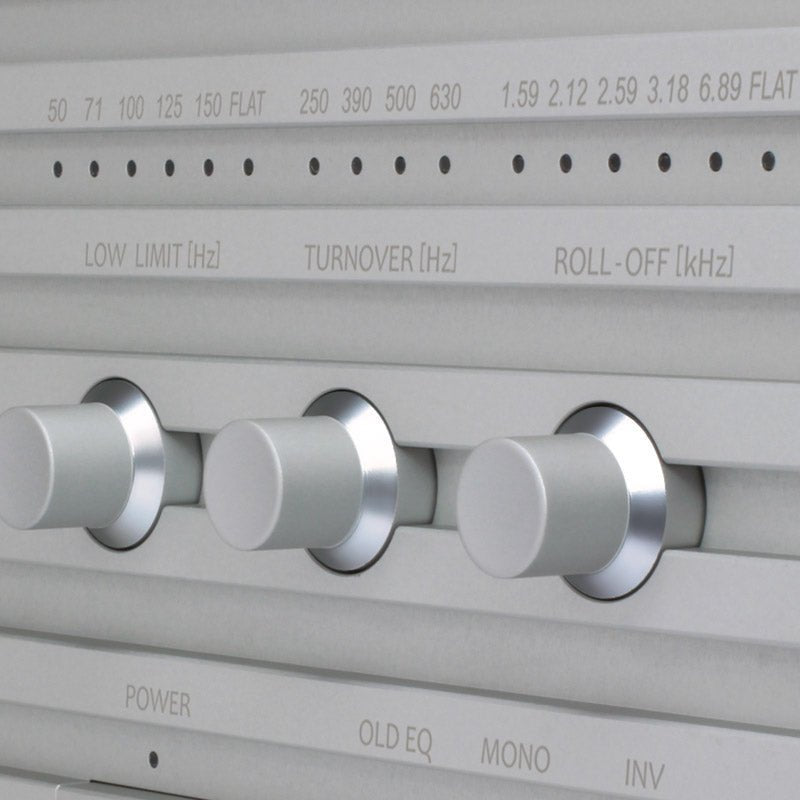SOULNOTE Chief Designer Kato's Design Philosophy Series Part 5
Frequency Brain
Today, I will address the topic of human hearing. It appears that our understanding of hearing has been skewed by the limitations of Fourier's law, which predominantly focuses on static performance. Typically, when we assess sounds, our minds default to considering aspects like bass, midrange, and treble — a perspective I've termed "frequency brain."
It's commonly believed that humans cannot detect frequencies above 20kHz. And while it's true I can't hear it, this limitation applies primarily to sine waves. To put it differently, humans might not hear frequencies above 20kHz when they are in the form of sine waves. However, they can sense a difference in the ascent of a musical waveform if frequencies beyond this range are truncated.
An apt analogy is the comparison of two sushi dishes, one made by a sushi chef and the other by an amateur, both using identical ingredients. The "frequency-brained" approach would blend the sushi and analyze its components, concluding that since the ingredients are the same, the taste is identical. Yet, the experience of eating the two sushi dishes, without blending them, would be entirely different.
In essence, sound research that emphasizes static performance (the frequency-centric view) and dynamic performance (which considers the time axis) yield distinct outcomes. Our reliance on static performance measurements is similar to relying solely on the blended sushi analogy — it misses the nuances of the experience.
Sound Image Localization
There's ample evidence contradicting the notion that humans can't perceive anything above 20kHz. For instance, with top-notch equipment, two speakers can deliver a three-dimensional sound experience. If you're skeptical, consider the intricacies of sound image localization, which involve phase differences translating to frequencies well beyond 20kHz.
Thinking Beyond Frequencies
Various experiments prove that humans can discern minute aspects of sound well beyond the 20kHz threshold. Our perception isn't limited strictly by frequency but encompasses other dimensions of sound, like its temporal characteristics.
Stay tuned for the next article where I delve into how static and dynamic performances intersect and influence each other.
SOULNOTE Chief Designer Kato's Design Philosophy Series Part 6
Social Experiment
Were it proven that excessive focus on static performance diminishes dynamic performance, it would revolutionize the audio industry. While not yet theoretically demonstrated, I firmly believe this can be empirically validated. But for now, my role is that of a designer, not a researcher, and SOULNOTE serves as a real-world testbed for this hypothesis.
Using the sushi analogy again, it's evident that merely analyzing individual ingredients doesn't capture the full essence of the dish. Sound evaluation, much like savoring sushi, is best done through experience.
Static vs. Dynamic Performance in Audio Design
In our audio design, we often grapple with trade-offs between static and dynamic performances. While negative feedback circuits, prevalent in audio systems, might enhance static performance, they can sometimes make music sound lifeless. This realization has prompted us at SOULNOTE to forgo negative feedback, favoring a more vibrant musical experience.
In our next segment, we'll delve deeper into our experiments with Non-Over-Sampling (NOS) and how dynamic performance often resonates more with the human auditory system.
SOULNOTE Chief Designer Kato's Design Philosophy Series Part 7
Continuing our exploration, we now look at instances where dynamic performance resonates more profoundly with the human auditory experience than static performance.
Static vs. Dynamic Performance
Static performance represents quantifiable metrics, while dynamic performance pertains to temporal aspects that are best discerned through listening.
NOS Mode vs. FIR Mode
Among SOULNOTE's milestones in recent years, the adoption of the Non Over-Sampling (NOS) mode stands out. This mode, while producing poor static performance metrics, offers a sound quality that's been widely acclaimed.
In FIR mode, while a sine wave might appear pristine, impulse waveforms exhibit artificial echoes due to the digital filter algorithm. Conversely, in NOS mode, the sine wave seems noisy, but the impulse waveform is notably clearer.
The essence of this discussion is that there's a fundamental difference in how we measure sound (static performance) and how we experience it (dynamic performance). The latter, often being more crucial, should guide our approach to sound design and appreciation.
Stay tuned for a deeper exploration into the nuances of audio design and the interplay between static and dynamic performance in our upcoming articles.




Share:
Soulnote Audio Philosophy (Part 3&4)
Soulnote Audio Philosophy (Part 8,9,10)